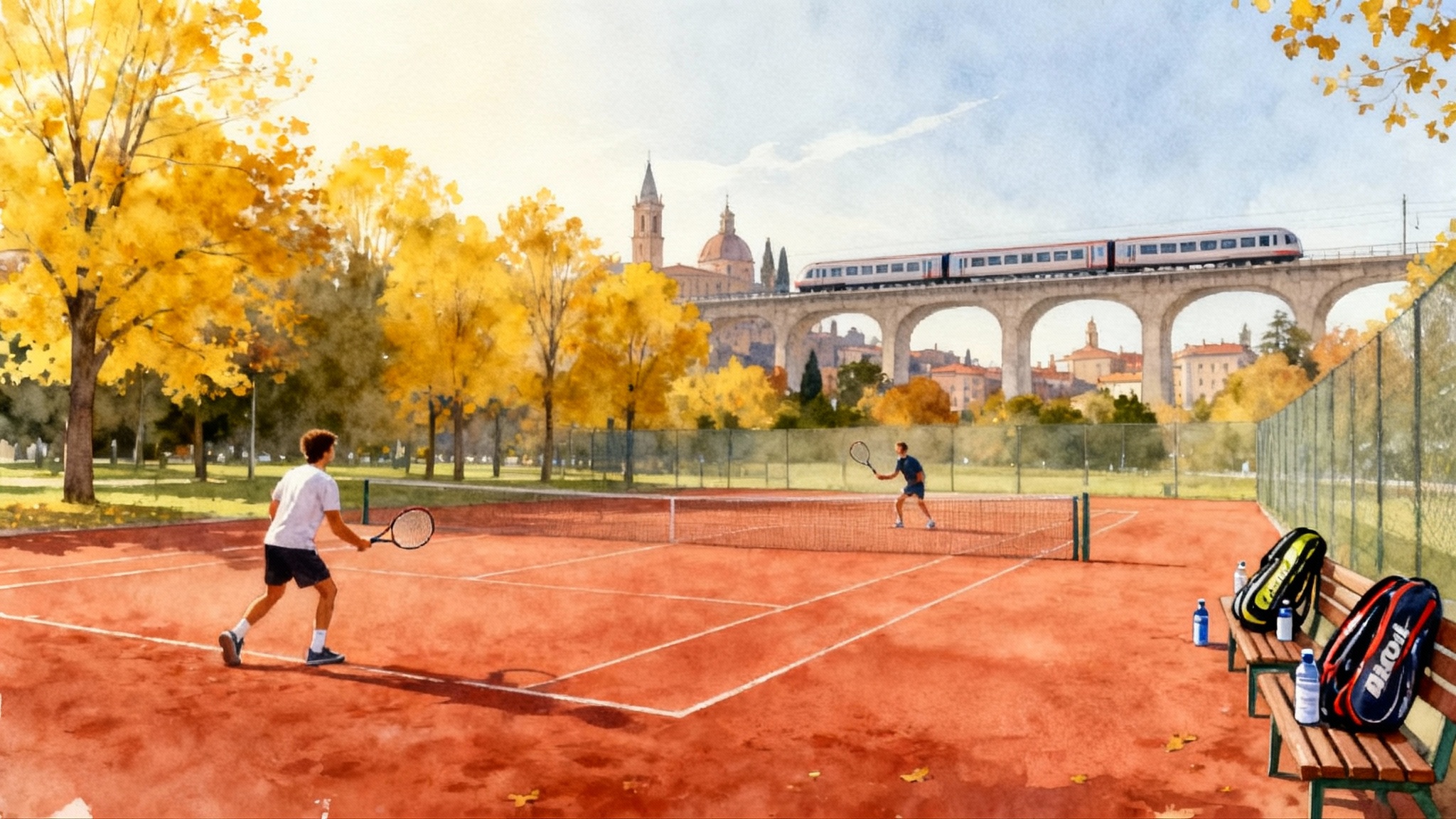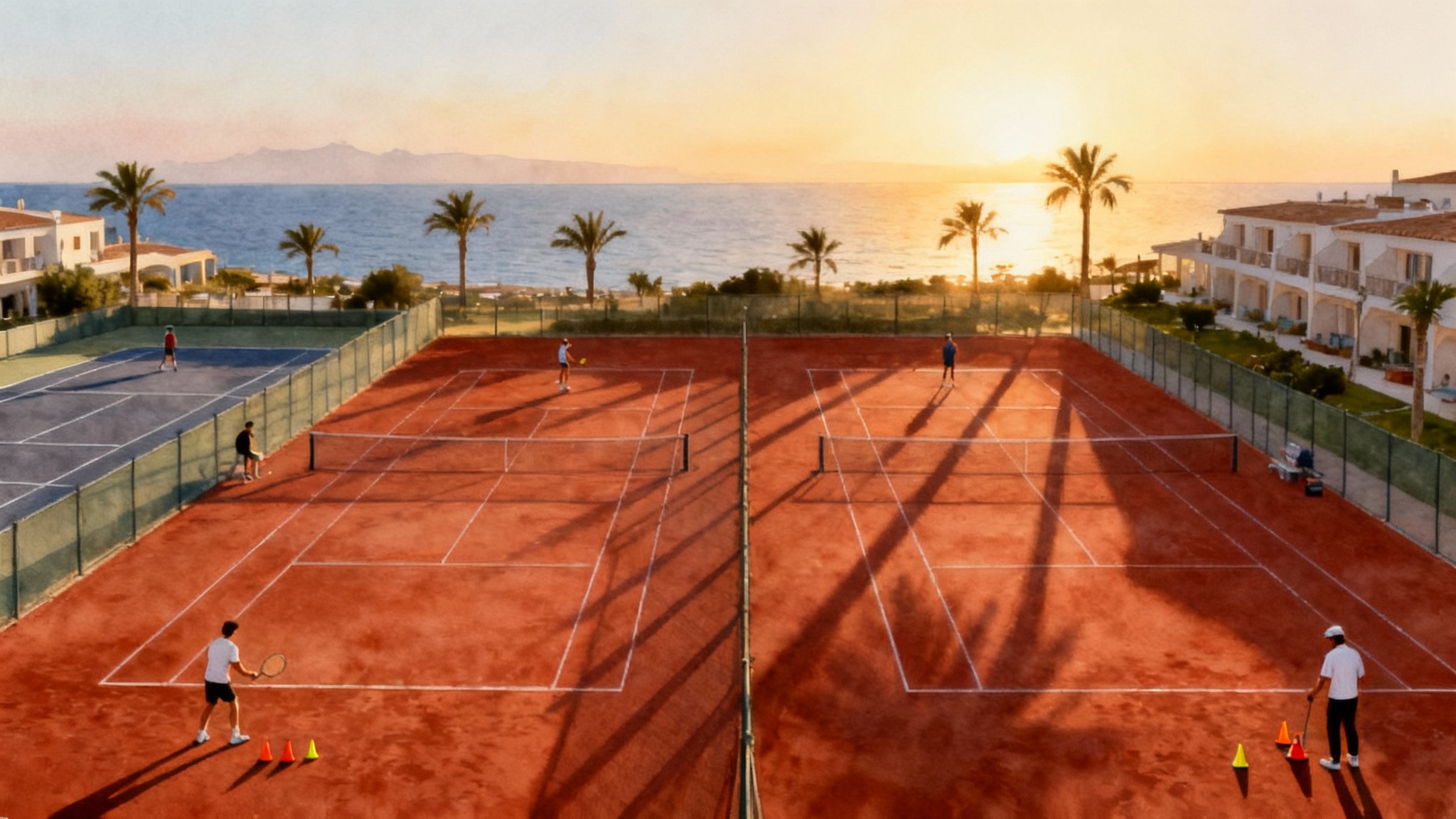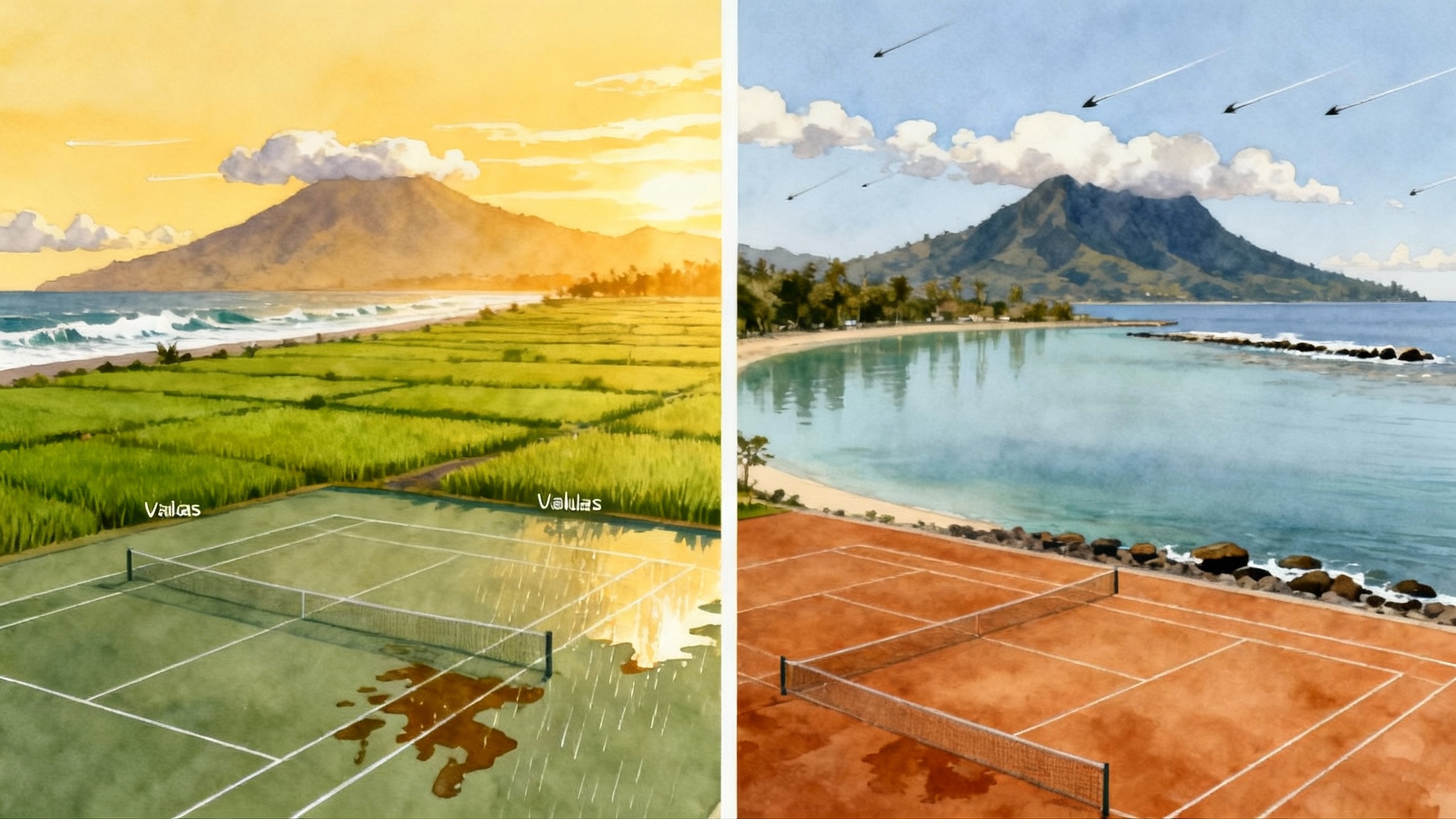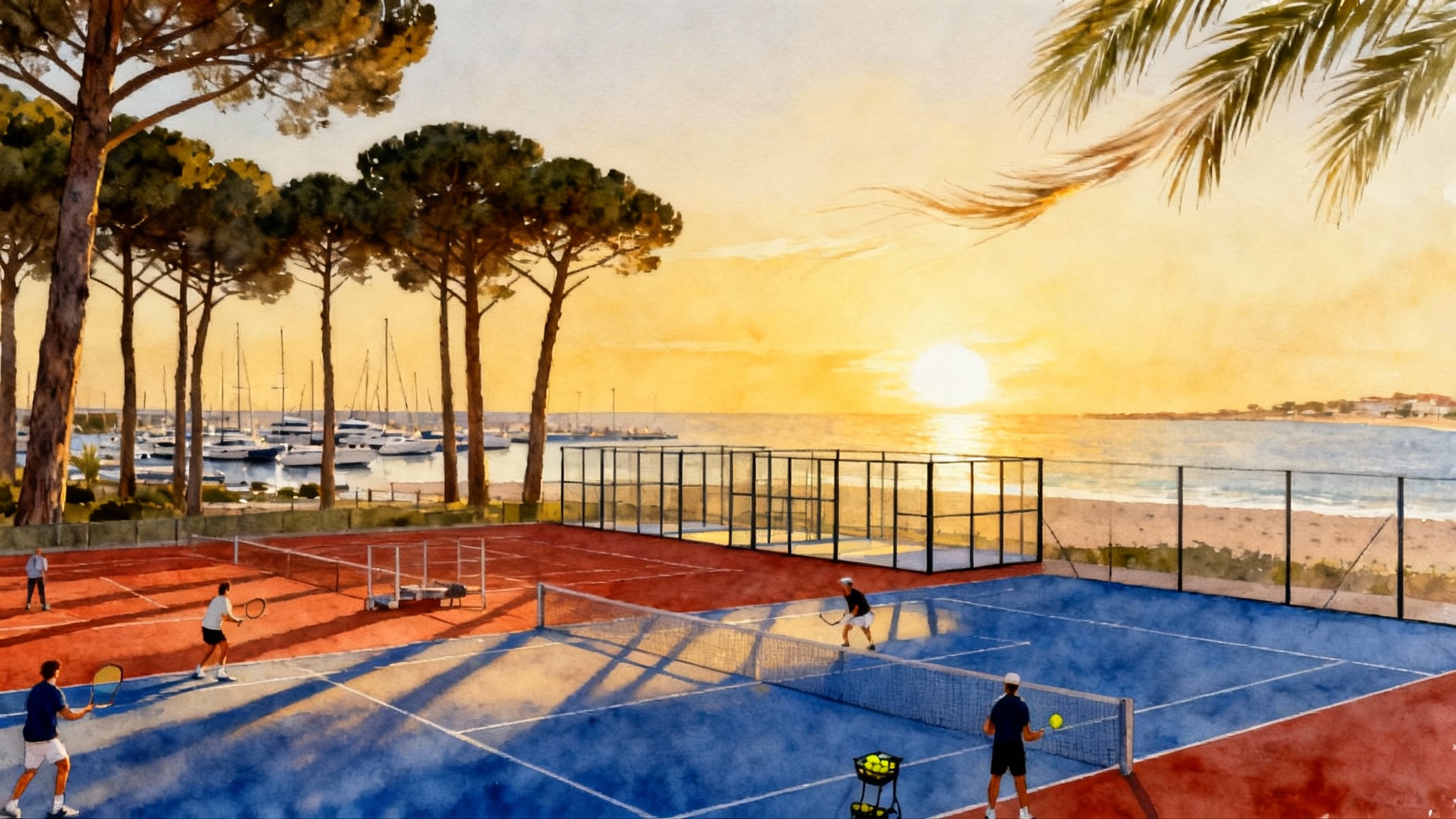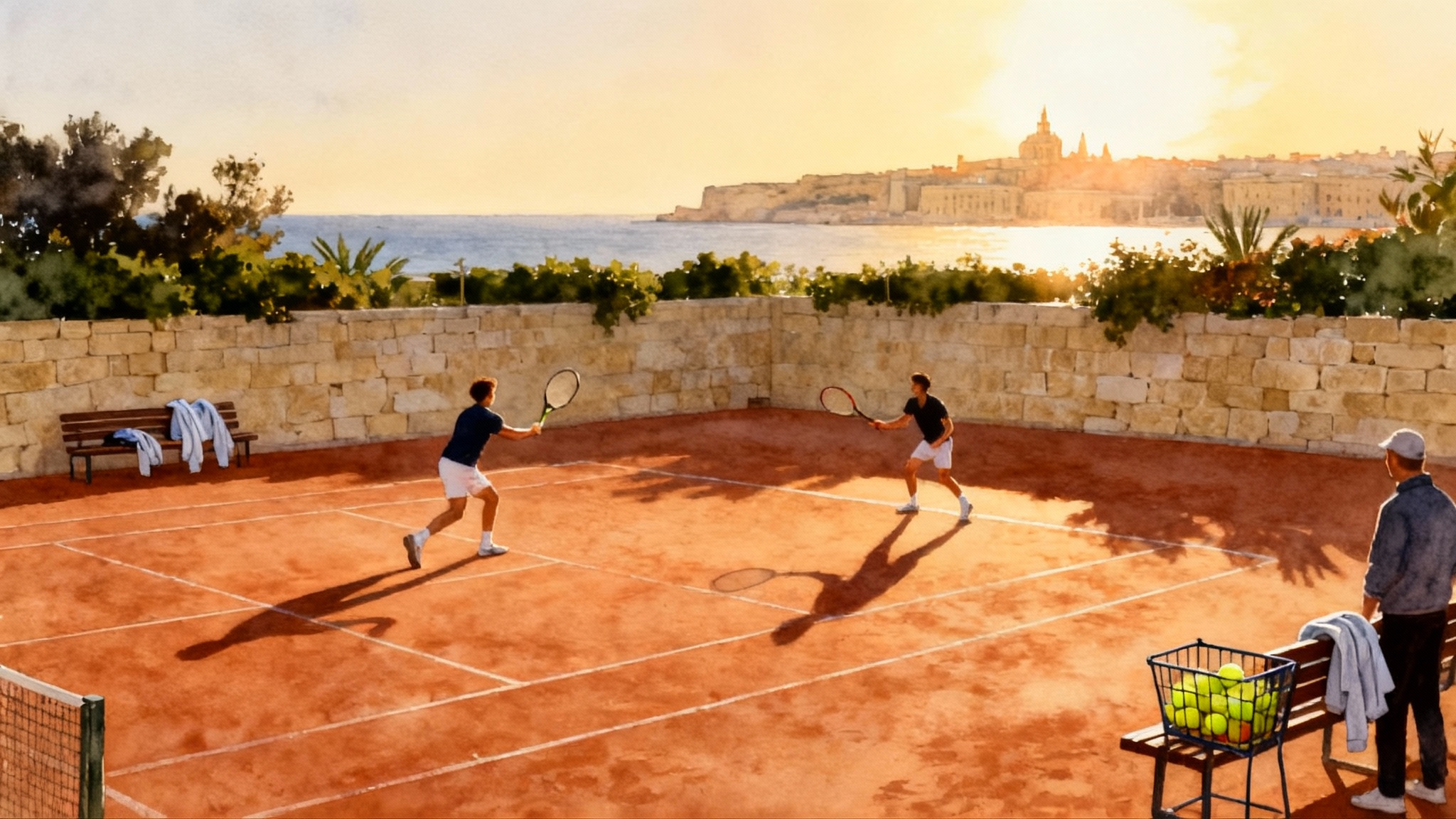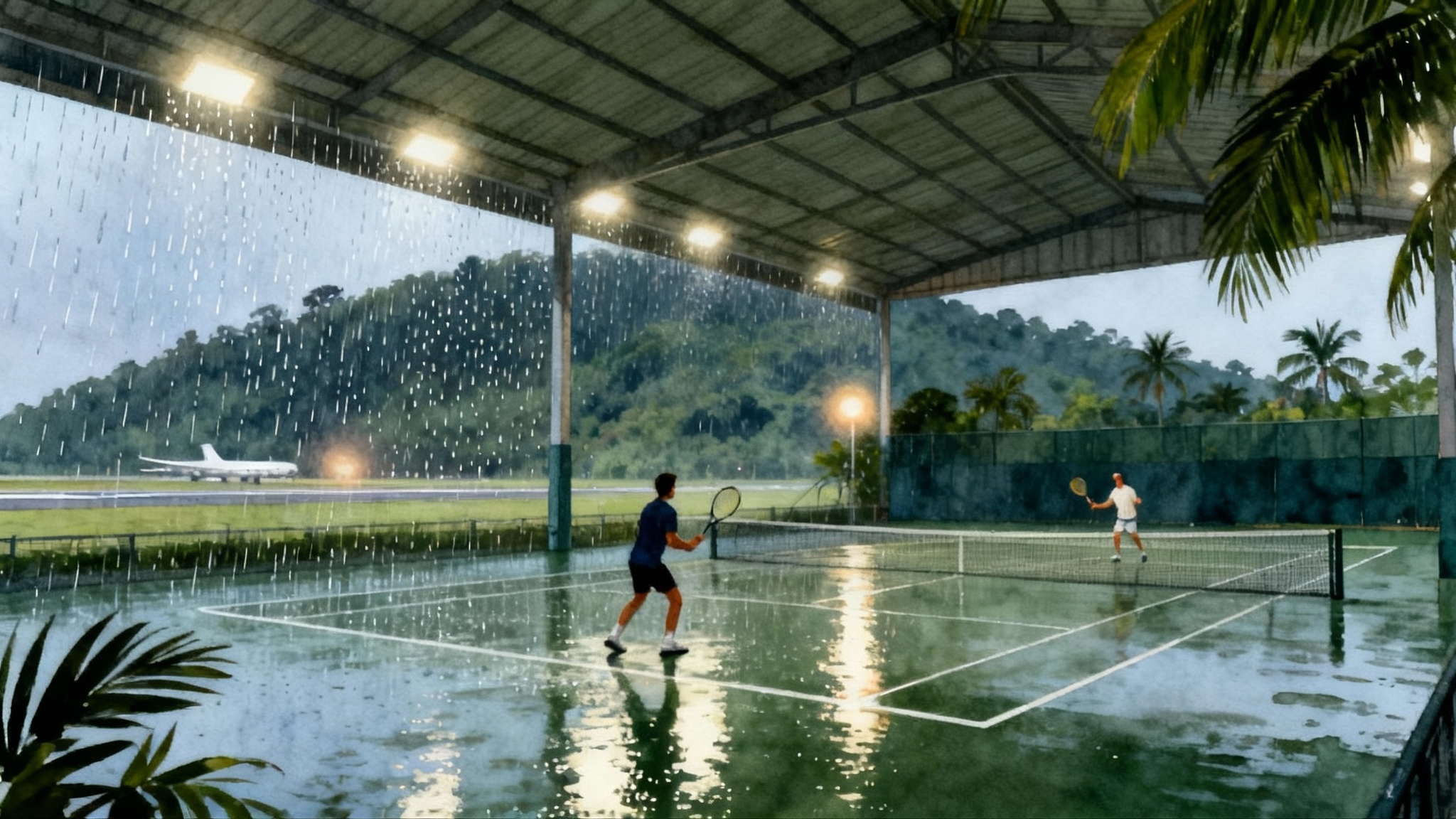Rain-Proof Tennis 2025–26: Seattle–Vancouver Indoor Corridor
Train through the Pacific Northwest wet season by chaining Seattle and Metro Vancouver indoor hubs. Here is how to book courts, budget smartly, cross the border smoothly, and grab rare outdoor windows when pressure rises.
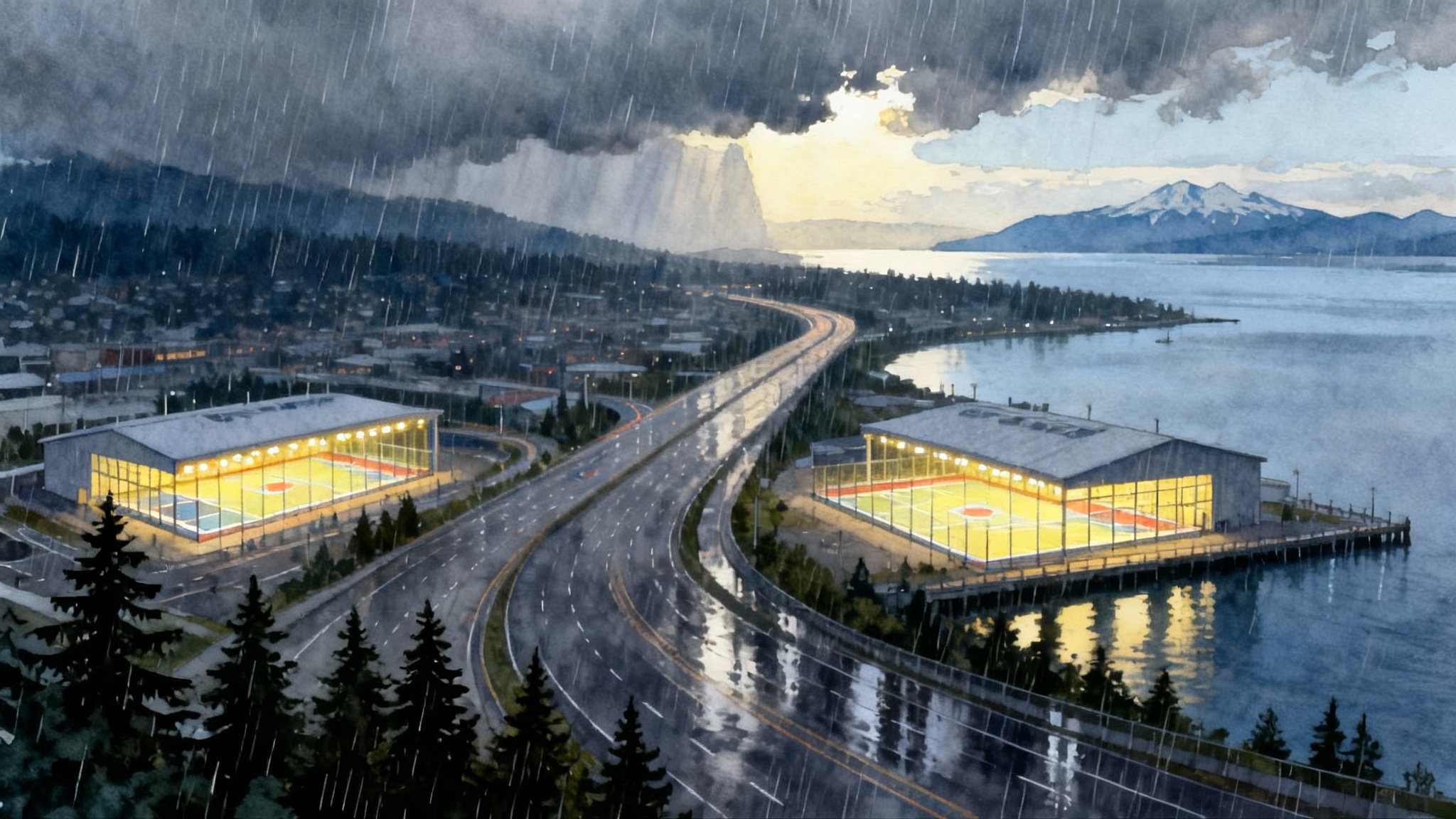
Why an indoor corridor beats the drizzle
From late October through March, the Pacific Northwest plays a different sport. Storm tracks line up, gray settles in, and outdoor courts collect puddles faster than a good split step. To keep your rhythm through the wet season, treat Seattle to Metro Vancouver as a single training corridor. Base in Seattle for a block, then hop north to Richmond and Vancouver for a second block. Two metros, one plan, and zero excuses to stop swinging.
This guide shows how to chain Amy Yee Tennis Center in Seattle with Vancouver International Tennis Academy in Richmond so you can run a clean 7 to 10 day training block. You will get pricing snapshots, booking tactics that actually work, cross-border logistics including NEXUS, EV realities, and simple weather cues to sneak in the occasional outdoor hit. For deeper background on each program, see the Amy Yee Tennis Center academy and the Vancouver International Tennis Academy profile. If you like corridor-style planning in warmer climates, compare with our South Florida clay corridor guide.
The anchor facilities
Amy Yee Tennis Center, Seattle
Amy Yee is Seattle’s public indoor hub: 10 indoor hard courts, a reliable ladder of adult clinics, junior development, and high school prep, plus ball machine access and private lessons. It is busy. The good news is that the City of Seattle keeps information and booking centralized, so you can plan in advance. Start with the official center page for current hours, rates, and policies: Amy Yee Tennis Center information.
Pricing snapshot as of October 2025: expect public indoor court rentals to vary by day and time. Midday weekday slots are the best value, evenings and weekends are premium. Private coaching rates vary by coach seniority. Ball machine sessions are a cost-effective way to build volume when prime hours are scarce. Use the booking tactics below to land the times you need.
What it feels like: court lighting is even, bounce is true on medium-speed hard courts, and the building holds temperature well. If you are chasing repetitions, you can safely schedule 2 to 3 hours daily without fighting the surface.
Vancouver International Tennis Academy, Richmond
Vancouver International Tennis Academy sits just south of Vancouver proper, close to Highway 99 and the airport. It is a high-performance training environment with grouped junior programs, adult clinics, and private coaching. The academy culture is structured but friendly, with an emphasis on footwork and pattern building. For visiting players, adult clinics and private sessions are the fastest way in. Juniors traveling with families can often slot into a one-week block inside existing training groups after a quick level assessment.
Pricing snapshot as of October 2025: adult small-group clinics typically price in the middle band for the region, private lessons sit above public center rates but below boutique clubs, and junior high-performance blocks are sold by the week or month. Plan for higher demand during weekday evenings and Saturday mornings. Expect priority on training continuity rather than one-off bookings as winter progresses.
Facility feel: clean, pro-shop on site, and a ball-fed warm-up area to get moving fast. If your Seattle block leans heavy on live ball, use Richmond to add footwork ladders, basket patterns, and match play under coach supervision.
Budgeting the corridor: realistic numbers
Treat this as a working budget rather than a price guarantee. Actual prices change by season, promotion, and coach seniority. The point is to set expectations and avoid sticker shock.
- Court time in Seattle public indoor: plan for a range that increases from late morning to evening. Weekday early afternoon is the best value.
- Ball machine at public center: low cost per hour and often easier to reserve than prime court slots.
- Adult clinic in Richmond: priced mid-market, with throughput that makes the spend worthwhile. You will get a lot of balls per minute.
- Private lesson: higher than public center rates, lower than private club peaks. Consider pairing 60 minutes of private instruction with 60 minutes of self-hitting to control costs.
- Border costs: the NEXUS trusted traveler program is the single best investment if you will cross more than a couple of times this season. Peace Arch and Pacific Highway crossings are both NEXUS enabled when lanes are open.
- Tolls: Washington has variable tolling on select corridors. Electric vehicles pay the same as gasoline vehicles. British Columbia currently has no tolls on Highway 99.
A simple weekly corridor budget for one adult can be built like this:
- Four hours of Seattle court time across two days
- One adult clinic in Seattle or Richmond
- One private lesson in Richmond
- Two hours of ball machine or self-hitting in each city
- Fuel or charging, plus parking
If you plan for this basket, you will have enough touches to maintain or improve form without overspending.
Booking tactics that actually work
Public indoor centers and performance academies reward preparation. Small changes in how you click and call can double your chances.
- Know the release window. Public centers often release reservations 7 to 14 days ahead at a specific time. Log in early, preload payment details, and refresh right as the clock flips.
- Target shoulder hours. Weekday late morning and early afternoon are the easiest wins. If you work standard hours, consider a single early morning block and one weekend block, then fill the rest with clinics or ball machine.
- Split the court. One hour of doubles at a busy time can be more realistic than two hours of singles at any time. Rotate returns and serve patterns with intention.
- Use the ladder. Many centers run in-house ladders. Two ladder matches in a week are often easier to secure than one perfect prime-time court.
- Waitlists work. People underestimate the value of adding multiple waitlists for the same evening. If a clinic offers a waitlist, enroll. Same-day openings are common when the rain is heavy.
- Write a short ask. For academies, send a concise note with your level, recent match results, and dates. Make it easy to place you in the right group.
- Keep a two-city calendar. Build a shared calendar that shows both centers. When a Seattle hold fails, be ready to flip a day to Richmond and vice versa.
Cross-border logistics without headaches
You will drive or ride the same spine: Interstate 5 from Seattle to the border, then Highway 99 to Richmond and Vancouver. Two border crossings serve most travelers: Peace Arch and Pacific Highway. Both can flow quickly on weekday middays and stack up during weekend afternoons.
- Documents: adults need a valid passport or an equivalent compliant document. Families should confirm requirements for minors in advance.
- NEXUS trusted traveler program: if you will make more than two trips this season, enroll now. NEXUS is jointly run by Canada Border Services Agency and United States Customs and Border Protection and allows use of dedicated lanes when they are operating. Start at the official page: apply for NEXUS membership.
- Timing: plan the southbound crossing either early morning or after 7 p.m. Northbound, late morning is typically calmer than midafternoon. Check live cameras and be ready to swap crossings if one backs up.
- Gear declaration: racquets, shoes, strings, grips, and balls are normal personal effects. New stringing machines or bulk gear for resale trigger different rules. When in doubt, ask the officer clearly.
- Mobile service: United States plans often include Canadian roaming, and vice versa. Confirm hotspot options if you run a tablet for match video.
Electric vehicle drivers: charging and toll truths
If you drive an electric vehicle, plan your stops but do not over-plan. The corridor is well covered.
- Charging networks: in the United States section, you will see Tesla Supercharger, Electrify America, EVgo, and ChargePoint along Interstate 5. In British Columbia, BC Hydro, Flo, and Tesla cover Highway 99 well. Expect faster plugs near Bellingham, Mount Vernon, and Richmond.
- Pricing: fast charging usually bills by kilowatt-hour or by minute. Assume a midrange price and you will land near the real number. Idle fees apply if you linger at full charge.
- Home base charging: if you are staying with friends or in a rental, a 240 volt overnight charge is the cheapest way to keep the week flowing.
- Tolls: Interstate 5 itself is toll free. In Seattle, the State Route 520 bridge and the State Route 99 tunnel charge variable rates. Electric vehicles pay the same as gasoline vehicles. British Columbia no longer tolls the major river crossings on this route.
Outdoor hits: read the sky for short windows
Even in November, you can sometimes grab 60 to 90 minutes outside between showers. Learn three simple cues.
- Rapid pressure rise: a quick jump toward higher sea level pressure is a classic sign of a clearing slot. If you see pressure rising and showers turning to scattered clouds, pack the outdoor bag.
- Fraser outflow: a gentle northeasterly breeze in Metro Vancouver often comes with clearer, colder air. Courts dry, but bring a heavier jacket and a dryer ball to wipe lines.
- Radar breaks and sun angles: patchy radar with widening breaks in late morning can deliver a dry lunch hit. Choose courts with fast drainage and lighter tree cover. Keep a towel for the baseline and aim for crosscourt patterns to avoid slick singles lines.
Sample itineraries that fit real lives
Here are two sample blocks that balance volume, recovery, and travel. Adjust to your level and schedule.
Seven-day adult tune-up
Goal: sharpen patterns and confidence for winter leagues without burning out.
- Day 1 Seattle: 60 minutes private lesson at Amy Yee on serve plus first ball, 60 minutes self-hitting focused on crosscourt depth. Light strength later.
- Day 2 Seattle: 90 minute adult clinic for live ball. Optional 30 minute serve bucket with video from a tripod at the back fence.
- Day 3 Travel and recovery: late morning drive north. Border in early afternoon. Check in near Richmond. Evening 45 minute easy jog or bike.
- Day 4 Richmond: 90 minute adult clinic at Vancouver International Tennis Academy. Emphasis on patterns to the body and down-the-line change. Fifteen minutes of serves after.
- Day 5 Richmond: 60 minutes private lesson on return plus first step, then 30 minutes of match play with a similar-level partner set up through the desk.
- Day 6 Outdoor window flex: if high pressure pops, hit outdoors midmorning on a public hard court for 60 minutes of serves and first strike. If not, use ball machine indoors for rhythm.
- Day 7 Richmond to Seattle: morning ladder match or open play if available. Drive home late lunch hour. Evening mobility and string racquets.
Weekly load: roughly 8 to 10 hours of tennis plus mobility. Sleep, fueling, and hydration are the real separators in this block.
Ten-day junior development block
Goal: grow fitness and decision speed while protecting the shoulder.
- Day 1 Seattle: 90 minute high-rep clinic. Evening homework: watch 20 minutes of pro patterns that match your style.
- Day 2 Seattle: 60 minute technique private on serve rhythm. Afternoon 45 minutes of movement ladders and medicine ball throws.
- Day 3 Seattle: 120 minutes total court time split between doubles patterns and baseline consistency. Add 15 minutes serves with strict pitch count.
- Day 4 Travel recovery: morning drive north. Border crossing late morning. Evening easy swim and stretch in Richmond.
- Day 5 Richmond: placement hit or level assessment, then join a 90 minute group. Focus on return plus neutral ball depth.
- Day 6 Richmond: 60 minute private lesson to tune forehand spin height. Add 60 minute supervised match play.
- Day 7 Study and sprint: off-court video session in the morning, then 30 minutes hill sprints. Easy 45 minute hitting only if shoulders feel fresh.
- Day 8 Richmond: 90 minute group with emphasis on transition. Fifteen minutes of volley and overhead patterns.
- Day 9 Outdoor flex: if the forecast gives you a dry slot, run a 75 minute fitness hit outside to build resilience in cooler air. If not, ball machine inside with tempo targets.
- Day 10 Richmond to Seattle: morning match, drive south after lunch. Night off with mobility and soft tissue work.
Block load: 14 to 16 hours of tennis, two strength sessions, and strict serve counts. Parents should bring snacks, hydration, and dry layers. Post-hit nutrition within 30 minutes keeps the next session sharp.
Packing and small upgrades that pay off
- Two pairs of shoes: keep one dry pair at all times. Indoor courts can feel slick when soles are damp.
- Grips and towels: winter hands change quickly. Overgrips and a hand towel keep the racquet stable.
- Layered tops: a thin base plus a light midlayer beats one heavy sweatshirt. You can peel layers between drills without cooling too fast.
- Dampener and lower tension: colder air can make the string bed feel stiffer. Drop two pounds if your arm feels tight.
- Tripod and phone clamp: 25 dollars buys you better feedback than memory alone.
Putting it all together
The corridor approach gives you a simple rule: if a reservation falls through in one city, do not lose the week. Slide north or south and keep the volume intact. Anchor your plan at a public workhorse like Amy Yee and a performance engine like Vancouver International Tennis Academy. Use clinics for volume, private lessons for course correction, and ball machines for reps. Watch the pressure, respect the shoulder, and keep the calendar flexible.
You cannot stop the rain. You can build the season you want in spite of it. This is how you do it, one court at a time, from Seattle to Vancouver.
